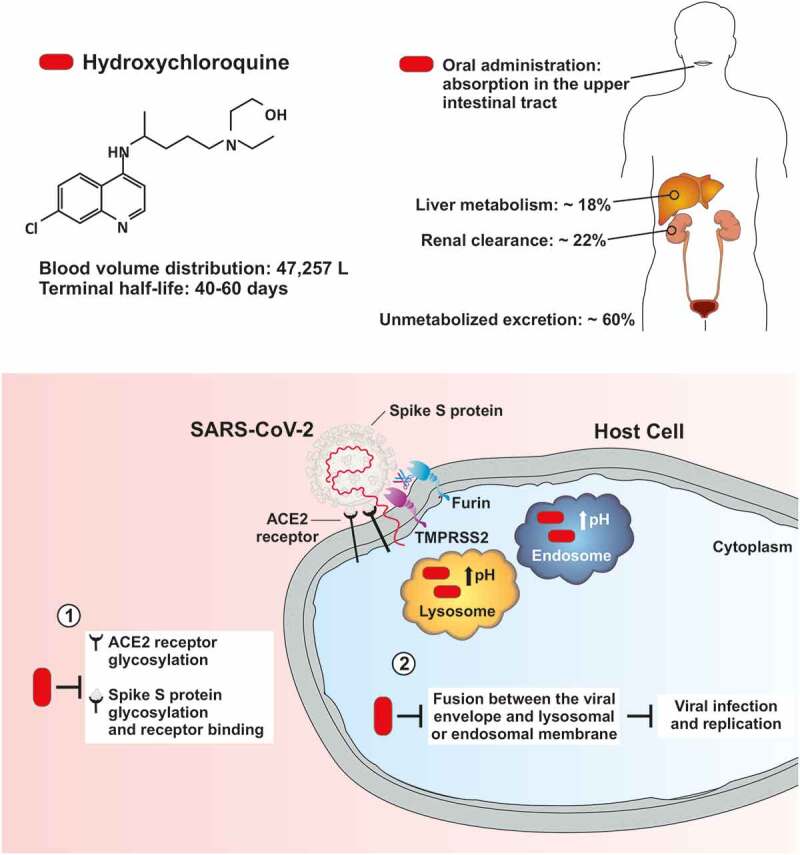Figure 1.

Pharmacokinetics of hydroxychloroquine and potential mechanisms underlying its postulated antiviral/prophylactic properties against SARS-CoV-2. Upper part) Pharmacokinetic properties of hydroxychloroquine (HCQ). HCQ displays a large volume of distribution and a long terminal half-life. Liver metabolism and renal clearance rate of HCQ amount to approximately 18% and 22%, respectively, and most of the administered dose is excreted unchanged in urine. Lower part) HCQ can interfere with the terminal glycosylation of ACE2 and viral spike S protein. The impaired glycosylation process of ACE2 and viral spike S protein may alter the affinity of SARS-CoV-2 for its receptor, potentially inhibiting key steps required for cell entry by SARS-CoV-2, such as receptor binding and membrane fusion. HCQ accumulates within cytoplasmic acidic organelles, such as lysosomes and endosomes, where it increases the pH, inhibits the activity of acidic pH-dependent lysosomal/endosomal proteases and ultimately prevents the fusion process between the viral envelope and lysosomal or endosomal membrane. Abbreviations: ACE2, angiotensin-converting enzyme 2; SARS-CoV-2, severe acute respiratory syndrome coronavirus 2; TMPRSS2, transmembrane protease serine 2.
